Best drones 2024: Expand your aerial horizons with the best drones
Experience the aerial prowess of the most advanced drone technology available and take to the skies with confidence and our extensive guide for the best drones.
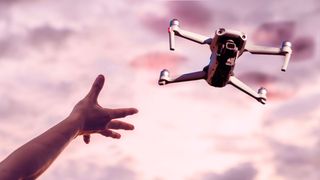
1. The list in brief ↴
2. Best overall
3. Best single camera drone
4. Best non-DJI alternative
5. Best professional mini drone
6. Best dual camera drone
7. Best portable camera drone
8. Best for beginners
9. Best FPV
10. Best premium FPV drone
11. Best for children
12. Buying advice
13. How we test
If you’re searching for one of the best drones, at a range of price points to suit all budgets, then look no further than this comprehensive guide. Whether you’re looking for a highly portable sub-250g model or a larger and more powerful drone offering the best image quality and camera functionality available in a prosumer model, we have you covered.
The best drones typically offer the most advanced functionality available, ranging from the best cameras to impressive safety and flight features. One key feature to look out for is obstacle avoidance because although this feature can’t work miracles and completely avoid the risk of crashes, it can certainly reduce them.
Subject tracking is another useful feature you’ll find on the best drones, and is one that makes light work of capturing video of moving subjects. This, combined with advanced obstacle avoidance technology, provides pilots with the tools they need to easily capture dynamic videos using autonomous flight.
These features are just the tip of the iceberg, but another consideration that has to be made is the size and weight of the drone you would like. Larger and more powerful models can be flown in stronger wind and typically offer the best image quality available, while smaller sub-250g models are less restricted by regulators and are much more comfortable to carry. As always, it’s a fine balance.
If the best drones available are more than you require, check out our best beginner drones guide where we cover the best options for absolute beginners. If the camera is the most important aspect of the drone for you, take a look at our best camera drones guide. And if you’d prefer to enter the exciting world of FPV drones, our best FPV drones guide explores some of the best ready-to-fly kits money can buy.
The Quick list
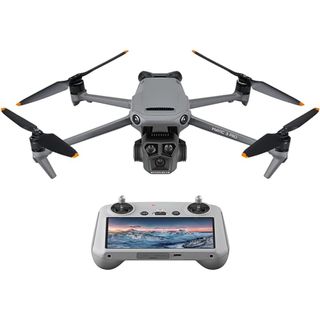
Best drone overall
The DJI Mavic 3 Pro is the world's first consumer drone to offer three cameras, and offers the best image quality available in a consumer model, alongside professional features.
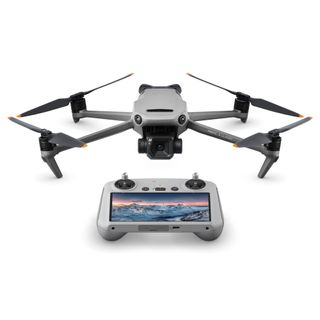
Best single-camera drone
If you're simply looking for the best drone with a single camera, look no further than the DJI Mavic 3 Classic with its impressive Four Thirds Hasselblad camera.
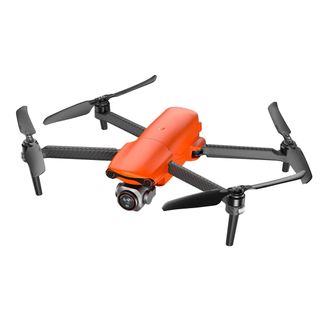
Best non-DJI alternative
The Autel EVO Lite+ is a powerful drone with a 1-inch sensor and professional features that's much less expensive than the DJI Mavic 3 series drones.

Best professional mini drone
The DJI Mini 4 Pro is an excellent pro-spec sub-250g category drone. Overall features and image quality are excellent, and the camera can be rotated 90 degrees for upright shooting.
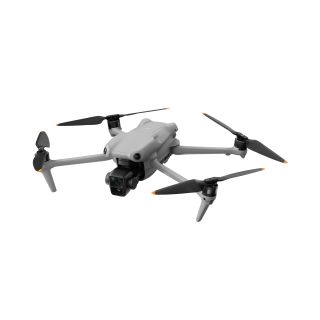
Best dual camera drone
The DJI Air 3 is an impressive dual camera drone offering a range of advanced features to provide impressive all-round performance in all areas.

Best portable camera drone
The DJI Mavic Air 2S is a medium size consumer drone offering a 1-inch sensor and excellent image quality alongside a wide range of useful features.
Load the next 4 products ↴

Best drone for beginners
The DJI Mavic Mini 3 is a small and lightweight beginner drone offering excellent image quality alongside ease of use and DJI reliability at an affordable price.
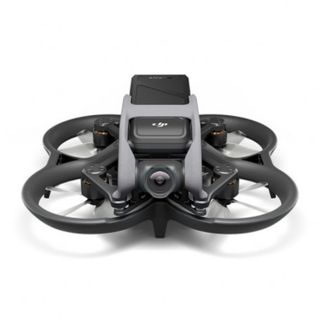
Best FPV Drone
The DJI Avata is the easiest FPV drone to fly and offers excellent 4K video capture. Whether you're an FPV beginner or an experienced pilot, the DJI Avata won’t let you down.
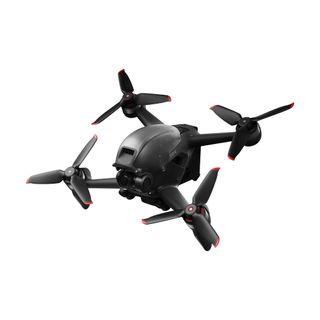
Best premium FPV drone
The DJI FPV may be a few years old now, but it remains an excellent choice for speed and 4K video capture alongside the ease of use you expect from DJI drones.
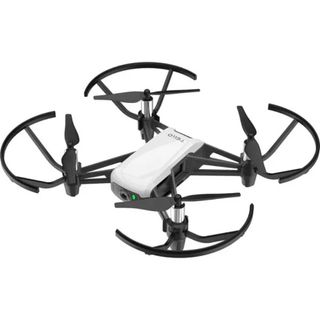
Best for children
Inexpensive, lightweight and easy to use, the DJI Ryze Tello is an option worth considering for beginners, children and safe indoor flights.
Best drones we recommend in 2024
Why you can trust Space.com
Best drone overall
















Specifications
Reasons to buy
Reasons to avoid
✅ You're looking for versatility: The three cameras on offer on this drone give you the ability to shoot different perspectives and different focal lengths at the same time, which can help produce more creative content.
✅ You want to shoot high-quality slow-mo: With this drone, you don't have to choose between quality and frame rates. You can shoot 5.1K up to 75fps, 4K up to 120fps and FHD up to 200fps.
❌ You're on a budget: With all the features on offer, this is quite an expensive drone and may be overkill for casual hobbyists.
🔎 DJI Mavic 3 Pro One of the best foldable drones on the market, this allows you to get stunning videos and offers great flexibility with three cameras that can film at the same time. The only real downside is the price, but we think beginners and pros would be pleased with this purchase. ★★★★★
The DJI Mavic 3 Pro is truly one of the best consumer drones on the market, with stunning image quality that will satisfy both amateurs and professionals. It is the world's first consumer drone to come with three cameras, unleashing a whole new world of creative potential.
The main showstopper is the 24mm Four Thirds Hasselblad camera, which can capture 20MP photos and 5.1K video and has an adjustable aperture between f/2.8 and f/11. This is flanked by a very useful 70mm medium telephoto and a 166mm telephoto to complete the trio.
It features the hallmark Mavic folding design and, like the other models, we found you could get around 30 minutes of flight time from it. It also comes with two different smart controller options, both featuring 5.5-inch touchscreens, so there's no need to hook up your smartphone.
The Mavic 3 Pro is very intuitive and easy to fly for a drone of this class since it comes with a number of flight and safety features such as Advanced Return to Home, AirSense ADS-B to detect aircraft, GEO 2.0 geofencing, obstacle sensing and automated flight patterns for video.
Although this is undoubtedly a pricey drone, it's been released at a similar price to older models, making the additional camera fantastic value. If your budget can stretch to it, you will not be disappointed with the incredible features offered by the Mavic 3 Pro.
- Read our full DJi Mavic 3 Pro review.
| Attributes | Notes |
|---|---|
| Design | Three cameras and two smart controllers |
| Functionality | Easy to fly, with obstacle sensing technology |
| Performance | Excellent image quality and videos up to 5.1K |
Best single camera drone



















Specifications
Reasons to buy
Reasons to avoid
✅ You want excellent image quality at a more affordable price: This drone contains the same impressive Hasselblad 20MP camera as the other DJI Mavic 3 models, but keeps the price down by doing away with the additional cameras.
✅ You want something easy to fly: With two different controller options and an Advanced Return to Home feature, you should be able to get the hang of this drone quite quickly.
❌ You're after an affordable beginner drone: While this is more affordable than the other DJI Mavic 3 drones, it's still quite pricey and there are several other cheaper options on the market for beginners.
🔎 DJI Mavic 3 Classic This is a great option for people who want the image quality of the DJI Mavic 3 drones without paying extra for additional cameras that they don't have need for. Although it's still not cheap, it's easy to fly and would make a good investment for keen beginners. ★★★★½
The DJI Mavic 3 Classic offers a more cost-effective alternative to the rest of the Mavic 3 series for those who don't require an additional telephoto camera on their drone. It is still equipped with the impressive 20MP 24mm Hasselblad camera found on the other drones in the series, so you won't have to sacrifice any image quality in the process. This camera can shoot in JPEG or Raw, has an adjustable aperture between f/2.8 and f/11, offers 3x digital zoom and can film 5.1K video up to 50fps.
There are two controller options with this drone, depending on your budget. You can opt for a controller with a retractable phone holder or pay a bit more to get a smart controller with a 5.5-inch touchscreen, which we found improved the overall user experience. This drone has the typical foldable design of the Mavic range and flight time was around 30 minutes during our testing.
Even beginners will be able to get the hang of flying this drone quickly thanks to all the on-board flight assistance. The Mavic 3 Classic features Advanced Return to Home, obstacle avoidance using multiple vision sensors and the highly effective ActiveTrack 5.0 for subject tracking. The High-Speed Quick Transfer feature also makes it super easy to share your results with clients or on social media since you can transfer files to your smartphone over WiFi at a rate of 80MB/s.
If you don't need a second camera, you can make a decent saving on this drone in comparison to the other Mavic 3 drones without losing many of their other great features and functionality.
- Read our full DJI Mavic 3 Classic review.
| Attributes | Notes |
|---|---|
| Design | Single Hasselblad 20MP camera and controller options |
| Functionality | Easy to fly, with good safety features |
| Performance | Fantastic image quality with 12.8 stops of dynamic range |
Best non-DJI alternative













Specifications
Reasons to buy
Reasons to avoid
✅ You're looking for top-quality video: This drone shoots up to an impressive 5.4K, which easily gives the DJI drones a run for their money.
✅ You want photographic flexibility: The adjustable aperture on this drone is very handy for experienced photographers set on capturing the perfect shot.
❌ You don't like using an app: The controller doesn't come with a built-in screen and relies on the AutelSky app on your smartphone to work.
❌ You want something ultra-portable: Even when folded, this drone measures 210×123×95mm and weighs 835g, so it's not the easiest to carry around with you.
🔎 Autel Evo Lite+ This drone offers extremely good image and video quality at a very competitive price, making it a good alternative to the DJI drone range. Whilst it's not the smallest or lightest drone out there, it comes with a relatively long battery life and good wind resistance, helping you to make the most of your aerial adventures. ★★★★½
Autel's EVO Lite+ offers an appealingly cost-effective alternative to the DJI drone range. Despite its competitive price, it comes with a high level of camera functionality and a range of other advanced features.
The EVO Lite+ boasts a 20MP camera with a 1-inch sensor and an equivalent focal length of 29mm. Videographers will be pleased to see an adjustable aperture on this model, ranging from f/2.8 to f/11 and allowing you greater control over the exposure when in flight. You can shoot up to 5.4K and capture 4K in 60fps. For still images, the ability to shoot in both Raw and JPEG is welcome, and the camera offers an ISO range of 100-6400, with results similar to entry-level DSLR and mirrorless cameras.
It comes with a controller that looks similar to gaming controllers and attaches to your smartphone to be used with the AutelSky app. The folding design makes it easy to transport, and you can choose from a range of colors including Classic Orange, Deep Space Gray and Arctic White. The high-capacity 6175mAh battery kept this 835g drone in flight for just over 30 minutes during our testing.
Other features include a very sensitive collision avoidance system, 38mph wind resistance, QuickShots automated flight patterns and Dynamic Track to enable the drone to track moving subjects. We think this drone offers excellent value for money, especially if you buy the Premium Bundle, which comes with additional batteries, spare propellers, a set of ND filters and a shoulder bag.
- Read our full Autel Evo Lite+ review
| Attributes | Notes |
|---|---|
| Design | High-quality folding design with 20MP 1-inch sensor |
| Functionality | Level 7 wind resistance, subject tracking and collision avoidance |
| Performance | Excellent image quality with up to 5.4K video |
Best professional mini drone










Specifications
Reasons to buy
Reasons to avoid
✅ You want a regulator-friendly drone: Sun-250g drones are subject to fewer restrictions than larger drones, which means they’re able to be flown with less fuss.
✅ You need a fully featured sub-250g drone: The DJI Mini 4 Pro offers features comparable to the flagship DJI Mavic 3 prosumer models making it the best sub-250g drone by far.
❌ You need higher wind resistance: The Mini 4 Pro can handle reasonably strong wind, but the larger and more powerful DJI Air 3 and Mavic 3 models are much more adept in stronger winds.
❌ You need dual cameras: The Mini 4 Pro has one excellent camera offering an equivalent focal length of 24mm, but the DJI Air 3 offers dual 24mm and 70mm cameras for added versatility.
🔎 The DJI Mini 4 Pro is the best sub-250g drone to date, offering advanced pro-spec features and excellent image quality. Plus, not only is it perfect for professionals, it’s a great option for beginners, too.★★★★½
The DJI Mini 4 Pro is the most advanced sub-250g drone available, offering flagship features and functionality that make the model truly worthy of the ‘pro’ moniker. This is incredibly important because it provides advanced pilots and professionals with a regulator-friendly drone that’s subject to fewer restrictions than larger models but with the most advanced features currently available.
Advanced features include Omnidirectional Obstacle Avoidance, improved subject tracking, Advanced Return to Home and several video upgrades. The drone is easy to set up and fly, which is great for beginners and experienced pilots, while the Mini 4 Pro is a smooth and responsive flier. The image sensor, and the camera, are the same as the Mini 3 / Mini 3 Pro so image quality is similar, although image processing is claimed to have been improved.
The image quality produced by the Mini 4 Pro is excellent, especially for such a compact drone, thanks to the 12/48MP 1/1.3-inch sensor with large 2.4μm pixels. This is housed within a camera offering an equivalent focal length of 24mm with a fixed f/1.7 aperture, that can be rotated 90° for portrait format shooting of both photos and videos. Video can be captured in both standard and flat color profiles with slow motion possible up to 4K. While photos can be captured in both Raw and JPEG formats.
- Read our full DJI Mini 4 Pro review
| Attributes | Notes |
|---|---|
| Design | Under 250g with a 12/48MP camera |
| Functionality | Smart controller, omnidirectional obstacle avoidance and advanced subject tracking |
| Performance | Shoots high-quality photos and videos in both portrait and landscape formats |
Best portable camera drone





Specifications
Reasons to buy
Reasons to avoid
✅ You're looking for excellent optics in a small package: This is the smallest and lightest of the drones that come with a one-inch sensor, so it strikes an ideal balance between image quality and portability.
✅ You're a videographer in need of top-quality video: The video resolution on this drone reaches an impressive 5.4K and it can also film in 4K at 60fps, leaving plenty of room for cropping and editing in post-production.
❌ You need an adjustable aperture: The aperture on this drone's camera is fixed at f/2.8 so you'd need to use ND filters to control shutter speed when filming video.
🔎 DJI Air 2S The main selling point of this drone is that it offers portability whilst not compromising on excellent image quality with its one-inch sensor. That makes it ideal for keen photographers and videographers who like to carry a drone with them on days out, but the fixed aperture may be a deal-breaker for some. ★★★★½
The DJI Air 2S is the most compact and lightweight drone with a one-inch sensor. Folded up, it only measures 7.1 x 3 x 3.3 inches (180 x 97 x 77mm) and weighs just 21 oz (595g), making it an extremely portable drone while still offering fantastic image quality. The propeller arms fold in for transport and fold out for flight, and all parts of this drone feel sturdy and reliable.
The camera on this drone is excellent overall. It features a 20MP one-inch sensor with a full-frame equivalent focal length of 22mm and up to 8x digital zoom. Although you wouldn't want to zoom in too far and risk the drop in image quality, we found 2x zoom extremely helpful for getting a more detailed look at subjects without having to fly the drone in too close.
You can shoot up to an impressive 5.4K video and 4K video at 60fps, creating some stunning shots. The only downside is that it comes with a fixed f/2.8 aperture so you can't control the exposure while it's in flight and will need to use a set of ND filters for filming video.
Like many of the other DJI drones, the Air 2S is packed with features that make flying it safe and easy. It's equipped with front, rear, bottom and top obstacle sensors, AirSense ADS-B technology to detect aircraft and multiple automated flight patterns that mean even beginners can shoot complex-looking video footage. We think it offers great value for money if you're looking for a portable drone that can still maintain high image quality and functionality.
- Read our full DJI Air 2S review
| Attributes | Notes |
|---|---|
| Design | Light and compact with a one-inch sensor |
| Functionality | Advanced Pilot Assistance System and AirSense technology |
| Performance | Sharp images with little fall-off and digital zoom |
Best drone for beginners











Specifications
Reasons to buy
Reasons to avoid
✅ You're looking for a more affordable beginner option: If your budget can't quite stretch to the DJI Mini 3 Pro, then the DJI Mini 3 is a great option and comes with the same high-quality camera on board.
❌ You want more advanced flying features: To save money, this drone doesn't come with obstacle avoidance or subject tracking, so you'll need to be very careful not to let it bump into things when flying it.
🔎 DJI Mini 3 With the same excellent camera on board, this is a great alternative to the DJI Mini 3 Pro for those on a tighter budget who want a more accessible beginner model. The only catches are that it doesn't come with obstacle avoidance or subject tracking and the 4K video tops out at 30fps. ★★★★
Beginner drones are often cheap and cheerful, and unfortunately severely lacking in the camera department, but that has all changed with the DJI Mavic Mini 3. This model is very much a cut-back version of the Mini 3 Pro – DJI’s flagship sub 250 g drone – but with the same camera so you can rest assured that image quality and overall build quality are excellent.
The camera provides an equivalent focal length of 24mm which is wide-angle and an ideal focal length for aerial photography and video. This is backed up by a 1/1.3-inch 12MP sensor and fixed f/1.7 aperture. The camera also rotates 90° to shoot photos and videos in both landscape and portrait formats, which is a most welcome feature for photographers and those creating aerial videos for social media.
ISO handling is also excellent throughout the full range of ISO 100-3200, while photos can be captured in both Raw and JPEG formats. Video can be captured in up to 4K at 30 fps in the Normal color profile, so while not as good as the Pro 3 which can shoot in the (flat/Raw) D-Cinelike color profile, it’s ideal for beginners and intermediate users. There’s also no collision avoidance so you have to take care when flying close to obstacles.
- Read our full DJI Mini 3 review
| Attributes | Notes |
|---|---|
| Design | Excellent 12.1MP camera with 1/1.3-inch sensor |
| Functionality | More basic, with no collision avoidance or subject tracking |
| Performance | Films in portrait or landscape, but only 30fps at 4K |
Best FPV drone















Specifications
Reasons to buy
Reasons to avoid
✅ You're new to FPV drones: FPV drones can be difficult to fly for beginners, but the DJI Avata makes the transition much easier by providing you with a straightforward Motion Controller to help you take to the skies immediately.
✅ You want the full immersive experience: You can purchase the DJI Avata as part of a kit with the DJI Goggles 2 to get the full FPV experience.
❌ You're an experienced FPV drone pilot looking for manual control: The DJI Avata doesn't come with a manual controller, but the DJI FPV Remote Controller 2 is available to buy separately.
❌ You want to be able to fly vertically: Again, you would need to purchase the additional DJI FPV Remote Controller 2 to unlock this feature.
🔎 DJI Avata We think this is an excellent choice of drone for beginners who are new to FPV drone technology. The Motion Controller is easy to get the hang of and you can buy a kit with goggles for the full immersive experience. But more experienced FPV fliers would need to buy an additional controller to make full use of the drone's features. ★★★★½
FPV drones are notoriously difficult to fly, but with the DJI Avata anyone can easily capture immersive FPV video footage in stunning 4K resolution at up to 60fps. The Avata can be flown in Manual/Acro mode which is the holy grail of FPV flight, but it’s this that makes FPV drones difficult to fly, so DJI ships the Avata kits with its intuitive and easy-to-use Motion Controller that’s ideal for beginners. More advanced pilots can purchase the FPV Controller 2 separately.
The Avata features a cinewhoop style design where prop guards are built into the airframe to protect the propellers in the case of crashes. The drone is 180x180x80cm and weighs in at 14.46oz/410g with a battery, which is advertised as providing up to 18 minutes of flight time. There’s also 20GB of onboard storage alongside a microSD card slot, so plenty of storage options for safely recording FPV videos.
Video quality from the 48MP 1/1.7-inch CMOS sensor, the f/2.8 lens with a fixed focus from 0.6m to infinity and the 12.7mm equivalent focal length is excellent. And although you can also shoot photos in JPEG format, this isn’t the type of drone for stills photography. The Avata is designed for shooting immersive FPV video and can capture in 4K up to 60fps, 2.7K at up to 100fps and 1080p up to 100fps with DJI Goggles 2. While with the DJI FPV Goggles V2, 2.7K and 1080p video can be captured up to 120fps. Video colour profiles include Normal and D-Cinelike, and the maximum video bitrate is 150Mbps.
The DJI Avata is available standalone and in two kits, so owners of compatible controllers and goggles can use their existing accessories. This basic No RC kit costs $629/£499, while the Pro-View Combo costs $1388/£1229 and includes the latest DJI Googles 2 and accessories. The Fly Smart Combo costs $1168/£989 and includes the slightly older DJI FPV Goggles V2 and accessories.
- Read our full DJI Avata review
| Attributes | Notes |
|---|---|
| Design | Easy to fly with beginner-friendly Motion Controller |
| Functionality | Clear video feed via DJI Goggles 2 |
| Performance | Excellent video quality with 48MP 1/1.7-inch CMOS sensor |
Best dual camera drone











Specifications
Reasons to buy
Reasons to avoid
✅ You need two focal lengths: With cameras offering 24mm and 70mm equivalent focal lengths, this versatile drone can be used to capture a range of subjects.
✅ You need a balanced drone: The Air 3 sits between the Mini 4 Pro and the Mavic 3 Pro, offering similar features and functionality but is lighter than the Mavic with more powerful than the Mini.
❌ You need an adjustable aperture: This drone has two cameras with fixed apertures, so if you’d prefer a model with an adjustable aperture for video, take a look at the Mavic 3 Classic and Mavic 3 Pro.
❌ You need a small and lightweight drone: If you’d prefer an easy-to-carry sub-250g drone with similar features to the Air 3, take a look at the DJI Mini 4 Pro.
🔎 The DJI Air 3 is an impressive drone overall and one that can suit the needs of both beginners and professionals. It’s a feature-packed model with advanced functionality including omnidirectional obstacle avoidance and excellent image quality from the dual cameras. ★★★★1/2
The DJI Air 3 is an impressive dual camera drone that uses two 1/1.3-inch sensors and offers 24mm and 70mm equivalent focal lengths alongside vertical shooting, 4K slow motion video and 48MP photo capture. This provides a huge amount of flexibility because pilots can shoot wider vistas or smaller subjects from a distance for safety or other reasons.
The Air 3 is a medium-sized model that sits between the DJI Mini 4 Pro and the DJI Mavic 3 Pro. It’s larger and more powerful than the former, with a maximum wind resistance of 27mph, and is slightly smaller and lighter than the latter with a weight of 25.4oz / 720g. Flight times average at around 35 minutes per battery before return to home is automatically initiated when the battery reaches 20%, so with the Fly More Bundle that includes three batteries, that’s a reasonable amount of flight time.
Alongside precise GPS positioning, the Air 3 offers omnidirectional collision avoidance and advanced return to home, which are incredibly useful and, indeed, effective safety features that help to reduce the risk of crashes. This is on top of incredibly easy-to-use flight controls, stable flight performance, advanced subject tracking functionality and to top it all off, excellent image quality for both photos and videos from both of the cameras.
- Read our full DJI Air 3 review
| Attributes | Notes |
|---|---|
| Design | Mid-sized drone with a folding design |
| Functionality | Impressive object tracking and omnidirectional obstacle avoidance |
| Performance | Excellent dual 24mm and 70mm cameras. |
Best premium FPV drone




Specifications
Reasons to buy
Reasons to avoid
✅ You want the full immersive FPV experience: This drone comes with the DJI Goggles V2, allowing pilots to fully immerse themselves in the drone's perspective. Just make sure you have someone else on hand to act as a spotter to avoid any mishaps.
✅ You want a drone you can learn and develop your skills with: The various flight modes available on this drone mean that it caters to relative beginners as well as more experienced pilots, so you won't need to upgrade once you become more skilled.
❌ You want something that's easy to transport: This drone doesn't feature the convenient folding design that you get with the DJI Mavic range, so you'll need quite a big bag to carry it and will also need to remove the propellers to stop them getting damaged in transit.
❌ You're serious about aerial photography: More seasoned photographers may find this drone a bit limiting, since it only shoots in JPEG and there is no option to shoot in Raw. It also lacks the quality and automated shooting modes common to the Mavic drones.
🔎 DJI FPV This drone offers the full FPV immersive experience and has enough flexible features to cater to a range of different skill levels, making it great fun for anyone to fly. Those whose main focus is photography and image quality may be better off with the DJI Mavic range, but the DJI FPV is ideal for hobbyists who want to experience the thrill of flying an FPV drone. ★★★★
The DJI FPV was one of the first 'attainable' FPV drones on the market, broadening access to this type of drone to the general public, and despite its age, we still think it deserves a place in this guide.
Despite being an FPV drone, it has 4K video capability up to 60fps, as well as a 12MP 1/2.3-inch COMS sensor with a fixed focal length equivalent to 14.66mm, a 150-degree field of view and a fixed f/2.8 aperture. For stills, however, this is not the best model you can find as it only shoots in JPEG and doesn't have the automatic shooting mode that some others have.
Pairing the DJI FPV with the DJI Goggles V2 will take you as close as you can get to the feeling of flying while remaining with both feet on the ground. We were really impressed by how crisp and sharp the screen view is, and the motion controller was a delight to use.
It's worth noting, however, that it's a bit less lightweight and portable than some of its counterparts in the Mavic series. At 10 x 12.3 x 5 inches in dimension, you'll need a large bag to transport it along with all the accessories required, but we think it's worth it for the flying experience it provides.
The DJI FPV is a fun way to get into flying from a first person perspective, so we think it's worth it for someone looking to improve their skills and do some immersive flying.
We wouldn't necessarily recommend it for complete beginners, however, as it's quite important to get to grips with flight controls on a standard drone first. While it's not the most expensive model out there, the FPV will set you back a fair amount, meaning your budget has to be considerable to get it. Repairs will also cost quite a bit, so it's probably not the right model to learn the ropes on.
- Read our full DJI FPV review
| Attributes | Notes |
|---|---|
| Design | Non-foldable but comes with DJI Goggles V2 |
| Functionality | Range of different flight modes to suit all levels |
| Performance | Great videos but not the best for still images |
Best drone for children





Specifications
Reasons to buy
Reasons to avoid
✅ You want to test out drone flying for the first time: This drone is a nice inexpensive way to try out the world of drones without worrying about crashing a seriously expensive bit of kit on your first flight.
✅ You want a fun present for kids: We think this drone would make a fun gift for any adventurous kids in your life, especially as it's safe to fly it indoors as well as in the backyard.
❌ You're looking for high image quality: In line with the price, the DJI Ryze Tello only offers 5MP still images and 720p video, so it's more suited to people who want to have fun flying than to people who want to capture brilliant shots.
❌ You want to do extended flying sessions: The battery life on this drone means that you can only get around 11-13 minutes of flying time.
🔎 DJI Ryze Tello As the cheapest drone on our list, this is ideal for anyone who wants to try out drone flying for the first time and would make a great gift for kids as well. It lacks the image quality of more expensive drones and the battery life is quite short, but it's a lot of fun and a good way to learn some initial flying skills. ★★★★
There are two main types of drones on the market: toys destined for amateurs and enthusiasts, and professional-grade camera drones for photographers and videographers. The DJI Ryze Tello belongs to the former category.
With a 5MP camera that produces JPEGs and 720p video, it only offers limited photo and video shooting capabilities, but it also constitutes an inexpensive entry point into drone flying for beginners. Its relatively low price tag means newcomers to the hobby can get a feel for flying drones and find out how they operate without worrying too much about crashing and causing damage.
Professionals and serious content creators should steer clear of this model as it only has a flight time of up to 13 minutes, which likely won't be enough to capture a significant amount of footage. There is also no gimbal included with it, and the camera quality isn't the best you can get.
However, it's really fun to fly and a great introduction into the world of drones for beginners. You can control the drone from the smartphone app it can be paired with, and it can be programmed using Scratch, which makes it a suitable choice for kids.
The DJI Telly Ryze can take off from the palm of your hand and be flipped in mid-air. You can even fly it indoors thanks to the propeller guards on it and the fact it weighs just 80 grams. The lightweight design also means it can perform a few preset aerobatic moves that other heavier drones can't. It's worth noting that the flight distance on this drone is limited to 100m, however.
The drone is fun and easy to operate, with a really responsive joystick controller (via the app). It's also not overly sensitive, so the user can feel fully in control when piloting the drone.
- Read our full DJI Ryze Tello review
| Attributes | Notes |
|---|---|
| Design | Sleek, lightweight and affordable, with propeller guards |
| Functionality | Easy to fly with fun trick flight features |
| Performance | Responsive controls and basic camera functions |
Buying advice
Buying a drone is exciting but can also be an overwhelming experience, considering the myriad options on the market. While there are hundreds of models to choose from, the advances in drone technology mean you're unlikely to find a really bad quality drone. However, they're usually a considerable investment, so it's worth thinking about what you're looking for in a drone to find the perfect fit for you.
DJI is the market leader in drone technology. Their models also tend to be relatively good value considering their quality and the features they come with. DJI has an extensive lineup, with models for all budgets and abilities. Among other famous brands, you might want to consider Autel, Parrot and Skydio, all of which have quality products and unique features.
Remember that if you're buying a drone weighing more than 249g, you'll need to register as a pilot with the CAA (UK) and FAA (US). The process is quick, easy, and relatively inexpensive, and failure to do so could result in a considerable fine, so it's worth doing it.
- Read more: Drone regulations
How we test
Space.com reviews a wide range of products ranging from telescopes, drones and cameras to 3D printers and VR headsets. Consequently, our reviews have varying formats depending on the type of product being tested. No matter what we’re covering though, there are three core areas that we look to test when writing our reviews: design, functionality and performance.
The best drones typically offer a combination of features, functionality and photo and video quality. Testing takes place over several days in different locations, environments and weather conditions (excluding rain) to assess flight performance, flight features, overall handling and image quality for both photo and video capture.
Drones are flown using manual flight patterns to test the connection between the aircraft and the controller, latency between the two, the accuracy of the controls, app connection, reliability and the flight experience in general. Automated flight patterns and collision avoidance are also typically available with these models, so these are always tested to check accuracy, reliability and ease of use.
All testing is conducted in a way that meets local aviation laws and restrictions to ensure that all flights are safe and legal. Drone laws vary from region to region, so you must check local laws and make sure that you’re following the guidelines for your country before embarking on your first drone flights.
Join our Space Forums to keep talking space on the latest missions, night sky and more! And if you have a news tip, correction or comment, let us know at: community@space.com.
Get the Space.com Newsletter
Breaking space news, the latest updates on rocket launches, skywatching events and more!
James is an award-winning freelance landscape and portrait photographer, as well as a highly experienced photography journalist working with some of the best photography magazines and websites with a worldwide audience. He’s also the author of The Digital Darkroom: The Definitive Guide to Photo Editing. www.jamesaphoto.co.uk
- Rowena CockettContributing writer
- Lloyd Coombes
- Jase Parnell-BrookesChannel Editor
